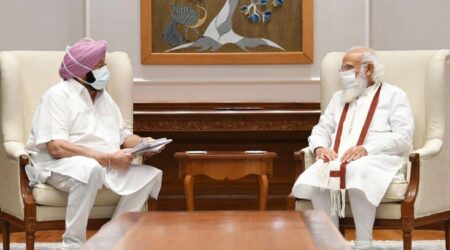By Venus Upadhayaya
Jammu was the seat of the power of Dogras, who ruled over one of the largest princely states in British India. The Dogra kingdom lay right between the British Empire and the Russian Empire during the 19th century when the geo-political rivalries called the “Great Games” were at their peak between the two empires.
The Dogras victories were more poignant because they were fought at a time when the British and Russian empires were both intensely competing and cultivating influence in the region.
The Great Game
The Great Game was a series of geopolitical games that happened across the Himalayan and trans-himalayan mountain passes, around a massive swath of land between the British Empire and Russian empire during the 19th Century.
The British were paranoid that the Russians would find a land route to their coveted colony of India. Kashmir was the first major civilizational point to the Indian mainland from across this wilderness between the British and the Russians and Peter Hopkir writes in his book, “The Great Game, on Secret Service in High Asia” that the British Intelligence was aware of at least one plan by a military general of Russian empire that involved invading India through Kashmir. In fact, in the early 20th century to the British horror, Soviets entered Chitral, an area on the extreme end of British India’s northern frontiers, on the border with Afghanistan’s Wakhan corridor.
In these series of unfolding events, there was one military power that went unsung in the Great Game paradigms: The Dogras.
The Great Game formally started in 1838 and the Dogra military led by General Zoravar Singh won Ladakh as far as certain tracts in Kailash Mansarovar in 1834. By 1940, Maharaja Gulab Singh’s forces won Baltistan. These earliest, conclusive victories of Dogras had no colonial military support, yet they defined British boundaries and British influence.
Today large swaths of these lands militarily won by Dogras are controlled by China and Pakistan while the de-facto border tri-junction between India, China and Pakistan lies exactly in this territory of Ladakh, Gilgit and Baltistan.
Dogras and the British

Mubarak Mandi: The dogra seat of power for over a century from 1822 to 1947.
Within a few years after 1822 when Gulab Singh was declared the Raja of the principality of Jammu, he managed to conquer 85 jagirs bordering the Kashmir valley as a vassal of the Sikh Kingdom. Thus, around the time when Central Asia was warming up to the Great Game, Gulab Singh had surrounded the Vale of Kashmir.
After Punjab fell to the British in the Anglo Sikh war of 1846, Sikh suzerainty over the Vale of Kashmir was transferred to the Dogras for 75 lakhs. At this time Satluj was the outer domain of the British which was 300 miles away from Kashmir and the northern frontiers, further ahead from Kashmir weren’t feasible for the British. The geo-politics is clearly visible here on the frontier map.
While the Dogras kept winning these tough terrains of northern frontiers, the British lost many explorers, diplomats, bureaucrats and agents to the treacherous power politics of the Great Game and the paranoia about the Russians always lingered.
Around the same time as Zorawar Singh had marched into Tibet, the British had gone further west in Afghanistan. The British Empire Army of the Indus had been totally wiped out during its humiliating retreat from Kabul. Western authors wrongly compare the Dogra fate in Tibet with the British fate in Afghanistan.
Claude Apri, the noted French born Indian author and historian writes in, “Tibet: the Lost Frontier” that Dogra forces fought nature more than the ill-equipped and ill-trained Tibetan militia. The western authors forget that while Kabul is at 5,873 feet above sea level, Mansarovar lake is 15,060 feet. They selectively closed their eyes to the fact that after Zorawar’s march into Mansarovar, the Dogras had a few territorial rights in Tibet while the British didn’t in Afghanistan.
The British facilitated the creation of the princely Dogra state of Jammu and Kashmir after Gulab Singh integrated some of the most treacherous northern terrains because Dogras were the strongest and the most successful militaries of the region during the Great Game period.
Rule over India passed on from the East India Company to the British Empire roughly at the same time as the creation of the kingdom of Jammu and Kashmir. Imagine how important the Dogras were for the protection of British interests from the Russians at that time. Would shrewd colonial rulers ally with incompetent militaries in such sensitive frontiers during Great Games!
Today the high altitude territory won by Dogra warriors of the likes of General Zoravar Singh and General Hoshiyara Singh is substantially occupied by Communist China.
China’s Aggression
Today, China has replaced the Russians in the 19-century Great Game territory. Isn’t 21st century India like the British India of 19-century facing Great Game two in its northern frontiers?

A village in Pangong Tso region. This is the topography through which the Dogras marched to the Kailash region.
Prime Minister Narendra Modi’s decision of 2019 to bifurcate the erstwhile Dogra kingdom into two federally governed territories of: Jammu and Kashmir and Ladakh can be seen as a Great Game strategy. It’s Great Game II and India has started warming up to it.
And, it’s also high time that the study of the Himalayas and the five trans-himalayan ranges of: Pamirs, Hindu Kush, Karakoram, Kailash Range and Kun Lun Shan be designated a separate legion in today’s geo-politics.
In China’s pursuit of 100 years of its “socialist” development by the mid-21st century, this region will certainly see enhanced great games. And, India can’t escape its destiny of sharing the longest himalayan border with the PLA including the trans-himalayan borders of Ladakh.
In the treacherous northern frontiers, you either conquer or you are conquered. Anything else is as blurry as today’s disputed borders–You can claim it but not control it. And the Communist Chinese are controlling it and claiming it, both!
A longer of of this article is available at: https://www.bridgeindia.org.uk/dogras-the-most-competent-militaries-great-games/

Venus Upadhayaya is a Senior Reporter – India and South Asia with The Epoch Times. She is also researching the history, culture and the geopolitical significance of Jammu and Kashmir, her ancestral home. Email: [email protected]
Disclaimer: The views expressed are not necessarily those of The South Asian Times












